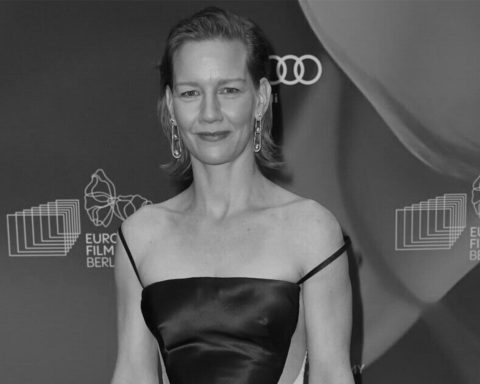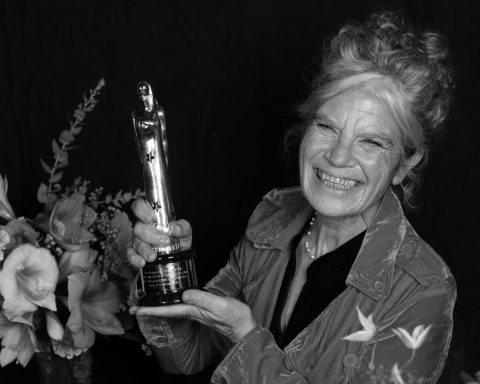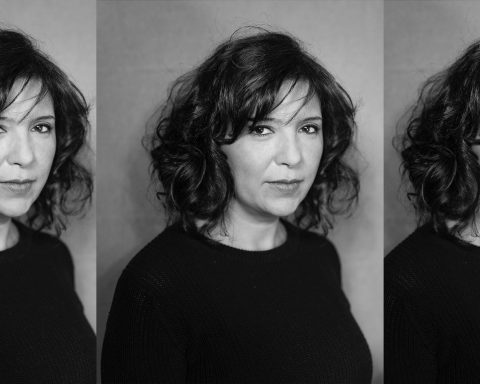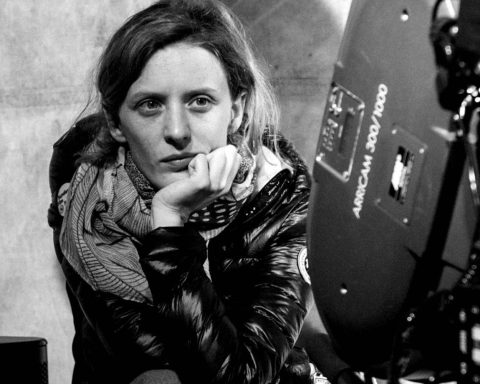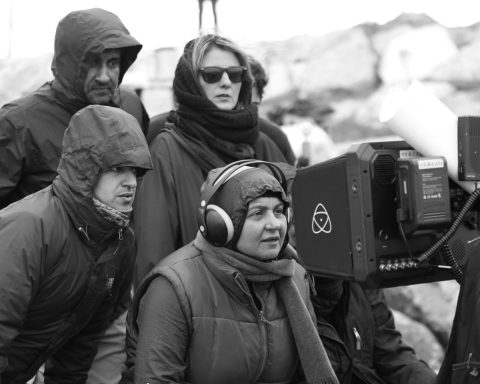Antonia Campbell-Hughes is a highly acclaimed actress with a wealth of awards and nominations
under her belt and established as having “a flair for experiment and depth.” Her breakout leading role was in Rebecca Daly’s “The Other Side of Sleep” that premiered in the Directors’ Fortnight in Cannes. In 2012, she was Screen International ‘Star of Tomorrow’ and received the prestigious Shooting Stars Award at the 62nd Berlinale. She has received International acclaim for her brave film work, namely in “3096Days” where she played Natascha Kampusch, shot by Michael Ballhaus who received the Golden Bear at the 2016 Berlinale. She won a BAFTA Award for her performance as the lead in “Kelly+Victor” by Kieran Evans. She also delivered noted a performance in Jane Campion’s “Bright Star.” Her TV acting credits include the comedy “Lead Balloon,” BBC’s “My Mother and Other Strangers” as well as the new series “Dangerous Liaisons” as Queen Marie-Antoinette for Playground/Starz, to be released in September 2022.
Tara Karajica talks to Antonia Campbell-Hughes about feminism and film and her debut feature, “It Is in Us All,” a raw, torturing and affecting look at masculinity and yearning for connection where a formidable man who cares for nothing is forced to confront his self-destructive core when a violent car crash involving a sexually charged boy who epitomises life, challenges him to face his truth. The film premiered at the 2022 SXSW Film Festival, where it A Special Jury Recognition for Extraordinary Cinematic Vision, and is now screening in the Europe! Voices of Women in Film program at this year’s Sydney Film Festival.
How did you get into filmmaking?
Antonia Campbell-Hughes: I went to Art School at seventeen – completely clear in how I could see a visual of what I wanted to do, but completely unclear of what that was in the language of profession. I did not grow up ever encountering the concept of “working in film.” I moved around constantly, and always wrote and filmed and built. I first learnt of concept-based interactive multi-media when I picked up my first medium/tool –fashion. I saw collections as a concept-based exploration. I had a label from age eighteen, that I was wholly invested in while studying. I also had an acting agent, but acting seemed a very different world of prettiness and display. I was a heavily pierced, shaved-headed punk for much of my teens. Acting seemed a space for debutants. Then, in fashion, I started making small films to showcase the work, and discovered another side to performance that was immersive and collaborative. I began acting, leaving the increasingly commercial fashion reality behind. I moved to London and got an acting job immediately – a BBC comedy series. I’ve been acting professionally ever since, but always writing and developing projects with screen Ireland and NI screen, TV projects, etc. Every film I’ve been in is a furthering of learning. Being able to observe such a vast array of talent for so many years – I can’t imagine a better Film School. I speak of my Art School beginnings, as I feel the work I make now as a filmmaker has come full circle to how I began as a seventeen-year-old, obviously with a large bag of knowledge and experience to draw from now.
How did It Is in Us All come about?
A.C.-H.: POV scheme. I was told that the feature I had been in development on would be too high a budget for my first film. I was encouraged to submit for this award fund POV, a lower budget of 400,000 euros, needing to be set in Ireland. I had spent a few years making short trips to visit the place I was born, and had left as an infant. I was yearning for some sort of land connectivity. This land to me felt alien and transportive in its atmosphere, compellingly so. Home adjacent. Like déjà-vu. I wanted to show my own experience of the work as sensory. The narrative is a culmination of lived truths and observations. During those trips, there was this continued difficulty in the sparse community of young children racing cars at night, along the narrow wild country roads, often crashing and repeating fatalities. They were children. The funerals were followed by these school children driving in convoy slowly along the road. They were tribal and captivating to me. Such absolute purity of soul, yet so naive in their spirit. I felt a deep kinship for this way of being. It reminded me of what a richer city landscape has often lost. The stifle of stimulus. Why we lose that potent vibration, where things are essential and worthy of self-sacrifice. Affluence of material access facilitates selfishness. These children were “men of mettle” in my mind. Yet so incredible vulnerable. I compared them to the men I see daily. Men who drive themselves for perfection and for any sense of satisfaction. Promiscuity, beauty, material acquisition, career success, status, and with that, a lack of connection. And, ultimately, a deep fatalistic hollowness. Both sides of these “male” to me seemed the obvious difference between male – an optional pronoun for a human – and masculine – the social ideal defined by our material society –. I have been awarded this “woman’s fund,” which immediately I felt a stress with as I tend to write my own experiences in all that I write through a male. Or a version of male. “Gender hat-tipping.” As in how we allow God to be he. When I was confronted with “gender choice,” I embraced that decision to infuse myself in the male form. That is all he is – a form in which the human exists. I wrote a story about how to explosively collide these two halves. And how that collision could alter the composition of the other, in a suspended reality/environment. I made a film to explore my own curiosities and to create a textured visual to show my own experience of life. Ultimately, we all try to find methods to communicate. Some connect naturally, some must find alternate tools. My work is my tool.
It is in Us All is a visceral portrayal of manhood in its purest and unrestrained form, with an uncontainable and indomitable vitality brimming with fatal danger. Can you delve deeper into people’s handling of near-death and peeling back the veneer of your male protagonists and the psychological repercussions of them being confronted with their true feelings that do not match the façade?
A.C.-H.: Actually, at no point did I ever focus on this being a subject of “near death.” Aren’t we always near to death? What I am interested in, is the need for self-preservation, self-care that eliminates risk. Restraint is exactly it. So rather than it being a near death experience, it is the abrupt intrusion of danger, that sparks electric vitality. The explosive nature of adrenaline that comes from shock. What I am fascinated by is those moments that are so fleeting they cannot be articulated. Attempting to exist in that fragment of time is an impossibility. In puberty, when the amygdala grows, boys stand on the edge of danger, fight, jump off walls… Later, the frontal lobes in the brain develop, teaching them consequence, empathy, etc. Men must be allowed to venture to their limits of adventure and aggression when they are young, without it spilling into violence and abuse. They must learn to manage their aggression from their levels of testosterone by moving to the boundaries of it and seeing what it does. This time of wild abandon is unsustainable. I am looking at a man who was repressed in this period and could not explore that developmental need. He has been effectively castrated through life, and suddenly reappointed his manhood. He is broken open to life, and is seen. A human is not one, unless they are seen. I feel that this extraordinary release and “first time” experience that comes in waves for Hamish is on par with sensuality.
Can you talk about this silent brotherhood, this shared restlessness, a sort of communion that is more connected to the place they are in, the untamed spaces, which also conveys echoes of generational trauma, deep self-loathing and longing for human connection?
A.C.-H.: As I end the last question – to be seen. Without this, there is no true context. The place where we come from can give context to who we are. Hamish finds threads of this in his time in the land of his mother’s heritage. It allows him to finally feel seen. Connection. This was very much a leading theme for me, one that I have always been compelled by personally. The man and boy have a sense of interchangeability between them on surface by their shared land connection and the absence of a mother figure. But beneath the exterior is their relationship with mortality. They have shared the same violent trauma of a crash; one man ultimately embodies the delicate nature of living, the other man is in acceptance of his disconnect with living.
Can you talk about the character of the grieving mother, one of only two female characters of the film? How do you see her?
A.C.-H.: Cara is reason. She was written intentionally as a presence that enters the free form, no-holds barred “affair” the two men embark on. Hamish is on borrowed time, where he has removed all of the elements in his real life, where he might be held accountable – work, colleagues, family. Cara is consequence. She is his adult sub-conscience that appears to drag him back to the truth. Pain is unavoidable. I intentionally wanted the physical form of these key characters to have similarities. Cara was written to have a form similar to one of the boys. Her expression to him of loss, is as a mother, but also as a guide.
Can you talk about the aesthetic of the film?
A.C.-H.: Science fiction in a pastoral setting is what I have always said about this piece. Science fiction is a tonality, and an experience that we can allow to be in in nature, in life and in cinema. I experience this as I write a visual setting that I know. It is splendid through the texture of the air, so harnessing this and creating that gradient was essential for me. I knew this landscape very specifically, where I would shoot. Delivering this experience on camera without additional artificial tools is important. Composition, throughout, is how I position an audience’s emotional impact. With sound levels and visual. This is a journey that will reach its release as end credits come to us. The house is the only structure we see, on an infinite vast expanse of planet.
For added elements to create an alien experience, finding the house came first. I wanted a place that was austere, unique in not being able to name its place or country. I found an old famine house that has been there for hundreds of years, but recently painted white, sitting on the very northern edge of Ireland. Isolated. It looked like Norway, but had the feel of forever. I was always very adamant to do as much in studio as possible. I am a fan of the FC Bergman theatre group. Interactive camera use and moving stage sets. Also, the work of theatre director Katie Mitchell. Myself, DP Piers McGrail, who I have worked with as an actor many times since the beginning of both our careers, and production designer John Leslie, planned aspects of the house interior to match the exterior. I found floor plans of a space I knew how to shoot in with locked off camera positions. Always wanting to repeat these set ups, and design the house interior lighting for camera. The interiors were chosen and dressed very carefully to go against a place we recognize. To create an unexpected experience. To allow this home to envelope Hamish in a place that could have provided care, guidance and dignity. I referenced the work of photographers Rinko Kawauchi, Martina Hooglands, and the paintings of Andrew Wyeth.; which I grew up with as a child in Delaware. The works of Danish painter Vilhem Hammershøi uses a frame within a frame to present the individual whom he is painting, always observing them quietly in the fullest space of the room. This work inspired much of the furniture style choices. We chose a mix of antiques, some of my own personal family items, and elements of contemporary. I wanted the house to feel timeless and also classic, not Irish.
What were the challenges when making this particular film? Was it difficult to both direct the film and play in it?
A.C.-H.: Well, highest level lockdown was indeed a challenge. But perhaps also in a sense, lent to the foreboding, an elevated sense of “otherness.” Practically speaking, it was very difficult to get actors flown in. Some things had to be reworked. All cast and crew had to live in pod units. This was one of the first Irish productions to go in Covid climate. We were in constant threat of being shut down. Locations were nearly impossible to secure, so having a set built was a huge asset. Everything logistically was very difficult. But again, I feel that good always work comes from extreme challenge. Acting in the film, was something I considered carefully. I was the right actor to play the part; with Covid restrictions, it gave ease. I was very conscious of how utterly different acting is for me as a discipline, to directing. My intent and design are of the same family, but the work is drawn from different places. Acting, I feel, is to be completely open as a receptacle; to give bodily and receive information to be guided and deliver. Whereas directing you are constantly thinking, working things out, trying to guide and manage multiples in one instance to create a whole. I made the role of Cara as efficient and concise as I could, knowing that I would perhaps be limited with my time.
Can you talk about the title “It Is in Us All”?
A.C.-H.: It is written in this manner, specifically to make us consider the words in their simplest form and their meaning. A very early draft of the script was written nearly with all dialogue in somewhat “prose adjacent’ – the title is something that stuck in this structure. The “It” is a specific. And I know what that is, but for the sake of those who have not seen my film, I won’t reveal. As it could be subjective.
Are you a feminist? If so, how does this inform your filmmaking?
A.C.-H.: This is a difficult question. I once answered no, in an interview many years ago as an actor. I had made a number of films that required the performance of an obvious strident feminist. I believe we are the product of our lives work and decisions. I advocate for the equal rights of women, of course. I never was aware of feeling subjected to discrimination specifically because of my femininity. I did, nevertheless, experience a strong social exclusion and disconnect. I didn’t feel the need to soapbox or be loud. To “be a feminist” seemed like a vocal outpouring, a change or a choice. I have always been inherently of this energy, which is gender aligned. Embracing both and neither. I am Feminist with a deep response to masculine and male. I find it confusing to carve up and divide what is “feminine” and what is “masculine.” Strength versus sensitive. This specifically plays into my work. It has made me very sensitive to how we define ourselves and find strength only in numbers rather than as individuals. I am very interested in how people conform to the image of a type. The patriarchal impact on the male and what he is expected to be and perform as. But then, I learnt that all of this luxury to reflect and have position, comes from privilege. And many do not have that privilege, and vocality and stance are the duty of those fortunate to speak and take position for others who are oppressed or without liberal accessibility. In terms of my film, I wanted to upend our understanding of ourselves, which includes our erotic selves.
What subjects interest you and that you would like to tackle in your work? What would you like audiences to come away with after watching your films?
A.C.-H.: In danger of repeating myself… I want people to feel magic. This can come in the form of discomfort, fear, recognition… It is to awaken a sensation that has not been felt in a long time.
Who is your favorite female filmmaker and what is your favorite film by a female filmmaker?
A.C.-H.: Oh! Such an impossible question. So many different positions, I take – angles. My teachers have been great female filmmakers… The female directors that I worked with early on had huge impact on me, and therefore remain some of my favorites. One of the first major influences was Jane Campion; I played in her film, Bright Star. Then, a very immersive piece by the extraordinary – one of the best Irish filmmakers in my mind – Rebecca Daly, her feature debut, which went to the Quinzaine in Cannes. Deborah Kampmeier is such a strident activist. And Sherry Hormann. I fell in love with cinema as a child via Boys Don’t Cry by Kimberly Pierce. Women who I admired in my teens are Alba Rohrwacher and Sarah Polley. But maybe for the reigning Kathryn Bigelow. In elementary school, she was everything I aspired to be. I wanted to marry her and to be her… Point Break and Strange Days were the sexiest films to my child mind. I wanted to live in the world she created. Urszula Antoniak… Claire Denis, obviously… Now, I’m just listing female incredible talents I adore.
What are you working on next?
A.C.-H.: I have a number of projects in various stages of development. Isn’t that what everyone says? But it’s true. It’s difficult to get films into final stages of production. I have been working on an original TV series for several years now. I am quite passionate about it. And, a film about Phylis Lynott and Phil Lynott’s mother and their relationship, which I’ve written a version of. I am looking for that perfect partnership and film, which ideally, I would like to write and direct as my next “auteur” piece. I love expansive set pieces, and being at the helm of a vast ship, so I would love to explore scale in the manner. There’s some acting work coming up that I am deeply bound to, which also very much comes into play in my work life. I feel very fortunate at the moment to be a part of, or have access to material that thrills me.
Photo credits: ©Juda Khatia Psuturi.
This interview was conducted in partnership with:

and







